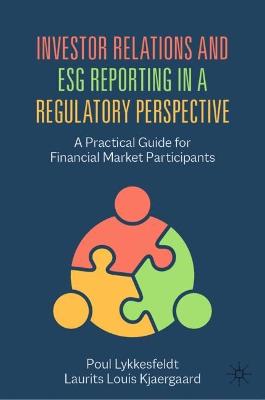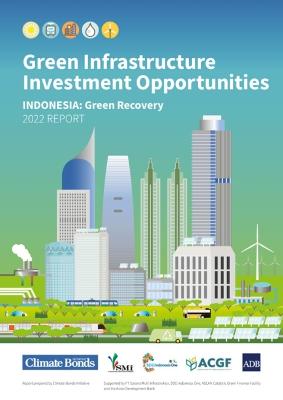Investor Relations and ESG Reporting in a Regulatory Perspective
 portes grátis
portes grátis
Investor Relations and ESG Reporting in a Regulatory Perspective
A Practical Guide for Financial Market Participants
Lykkesfeldt, Poul; Kjaergaard, Laurits Louis
Springer International Publishing AG
08/2022
346
Dura
Inglês
9783031057991
15 a 20 dias
735
Descrição não disponível.
Introduction.- Section 1: The financial markets: An overview.- Chapter 1.1: The benefits and drawbacks of a stock market listing.- Chapter 1.2: The formation of stock prices.- Chapter 1.3: Ethics in the financial markets - why a solid IR framework is key.- Chapter 1.4: Understanding valuation methodology of the financial markets.- Chapter 1.5: Integrating ESG in equity research.- Chapter 1.6: Valuation methodology from the perspective of different investor types.- Section 2: The participants of the financial markets.- Chapter 2.1: Understanding the financial markets' stakeholders and their motivation.- Chapter 2.2: Understanding the role of institutional investors.- Chapter 2.3: How to communicate with retail investors.- Chapter 2.4: The sell-side/equity analysts, brokers and corporate access.- Chapter 2.5: Corporate finance advisers.- Chapter 2.6: Considering the role of non-financial markets stakeholders.- Section 3: Major legislation themes related to the European financial markets.- Chapter 3.1: How is legislation implemented on the European financial markets?.- Chapter 3.2: Learning from the impact on financial markets of recent legislation.- Chapter 3.3: How to optimise IR within the existing legal framework.- Chapter 3.4: The new wave of ESG regulatory framework.- Section 4: Achieving a fair valuation of the company through best-practice IR.- Chapter 4.1: The IR function.- Chapter 4.2: Deciding on IR ambitions and its success factors.- Chapter 4.3: IR within the organisation.- Chapter 4.4: IR's responsibilities of implementing policies and planning ahead.- Chapter 4.5: IR tools to engage a company's stakeholders.- Chapter 4.6: Managing the expectation of the financial community.- Chapter 4.7: Embracing the digital world of IR activities.- Section 5: IR in special situations.- Chapter 5.1: Preparation of difference types of IR-related contingencies.- Chapter 5.2: Developing a take-over response manual.- Chapter 5.3: Valuation in a takeover situation and strategic alternatives.- Chapter 5.4: Shareholder engagement and monitoring market activity.- Chapter 5.5: Investor activism.- Chapter 5.6: The company - before, during and after an IPO.- Section 6 Embracing non-financial/ESG reporting.- Chapter 6.1: The origin of ESG.- Chapter 6.2 Stakeholder capitalism and sustainable leadership.- Chapter 6.3 Institutional investors are embracing ESG strategies.- Chapter 6.4 Consideration sustainable finance disclosure regulation (SFDR).- Section 7 The framework of best-in-class non-financial reporting.- Chapter 7.1. Implementing taxonomy.- Chapter 7.2. Implementing non-financial reporting standards.- Section 8 Preparing the company's first ESG report.- Chapter 8.1. For the first non-financial report: a checklist to get into gear.- Chapter 8.2. The importance of mobilising ESG with incentives.- Section 9 Aiming for best-in-class ESG reporting.- Chapter 9.1: Taking already implemented non-financial reports a step further.- Chapter 9.2: Encompassing ESG rating agencies.- Section 10 Future trends of financial and non-financial reporting.- Chapter 10.1: Best-practice IR is about being at the forefront.- Chapter 10.2: Is the next decade scary or exciting?.- Postscript.- Summary of facts and best practice.- Overview of Nasdaq's ESG reporting guidelines.
Este título pertence ao(s) assunto(s) indicados(s). Para ver outros títulos clique no assunto desejado.
Investor relations;Financial markets;Capital markets;non-financial reporting;EU capital markets;EU capital markets legislation;EU financial markets regulations;ESG reporting;CSR/CR reporting
Introduction.- Section 1: The financial markets: An overview.- Chapter 1.1: The benefits and drawbacks of a stock market listing.- Chapter 1.2: The formation of stock prices.- Chapter 1.3: Ethics in the financial markets - why a solid IR framework is key.- Chapter 1.4: Understanding valuation methodology of the financial markets.- Chapter 1.5: Integrating ESG in equity research.- Chapter 1.6: Valuation methodology from the perspective of different investor types.- Section 2: The participants of the financial markets.- Chapter 2.1: Understanding the financial markets' stakeholders and their motivation.- Chapter 2.2: Understanding the role of institutional investors.- Chapter 2.3: How to communicate with retail investors.- Chapter 2.4: The sell-side/equity analysts, brokers and corporate access.- Chapter 2.5: Corporate finance advisers.- Chapter 2.6: Considering the role of non-financial markets stakeholders.- Section 3: Major legislation themes related to the European financial markets.- Chapter 3.1: How is legislation implemented on the European financial markets?.- Chapter 3.2: Learning from the impact on financial markets of recent legislation.- Chapter 3.3: How to optimise IR within the existing legal framework.- Chapter 3.4: The new wave of ESG regulatory framework.- Section 4: Achieving a fair valuation of the company through best-practice IR.- Chapter 4.1: The IR function.- Chapter 4.2: Deciding on IR ambitions and its success factors.- Chapter 4.3: IR within the organisation.- Chapter 4.4: IR's responsibilities of implementing policies and planning ahead.- Chapter 4.5: IR tools to engage a company's stakeholders.- Chapter 4.6: Managing the expectation of the financial community.- Chapter 4.7: Embracing the digital world of IR activities.- Section 5: IR in special situations.- Chapter 5.1: Preparation of difference types of IR-related contingencies.- Chapter 5.2: Developing a take-over response manual.- Chapter 5.3: Valuation in a takeover situation and strategic alternatives.- Chapter 5.4: Shareholder engagement and monitoring market activity.- Chapter 5.5: Investor activism.- Chapter 5.6: The company - before, during and after an IPO.- Section 6 Embracing non-financial/ESG reporting.- Chapter 6.1: The origin of ESG.- Chapter 6.2 Stakeholder capitalism and sustainable leadership.- Chapter 6.3 Institutional investors are embracing ESG strategies.- Chapter 6.4 Consideration sustainable finance disclosure regulation (SFDR).- Section 7 The framework of best-in-class non-financial reporting.- Chapter 7.1. Implementing taxonomy.- Chapter 7.2. Implementing non-financial reporting standards.- Section 8 Preparing the company's first ESG report.- Chapter 8.1. For the first non-financial report: a checklist to get into gear.- Chapter 8.2. The importance of mobilising ESG with incentives.- Section 9 Aiming for best-in-class ESG reporting.- Chapter 9.1: Taking already implemented non-financial reports a step further.- Chapter 9.2: Encompassing ESG rating agencies.- Section 10 Future trends of financial and non-financial reporting.- Chapter 10.1: Best-practice IR is about being at the forefront.- Chapter 10.2: Is the next decade scary or exciting?.- Postscript.- Summary of facts and best practice.- Overview of Nasdaq's ESG reporting guidelines.
Este título pertence ao(s) assunto(s) indicados(s). Para ver outros títulos clique no assunto desejado.







